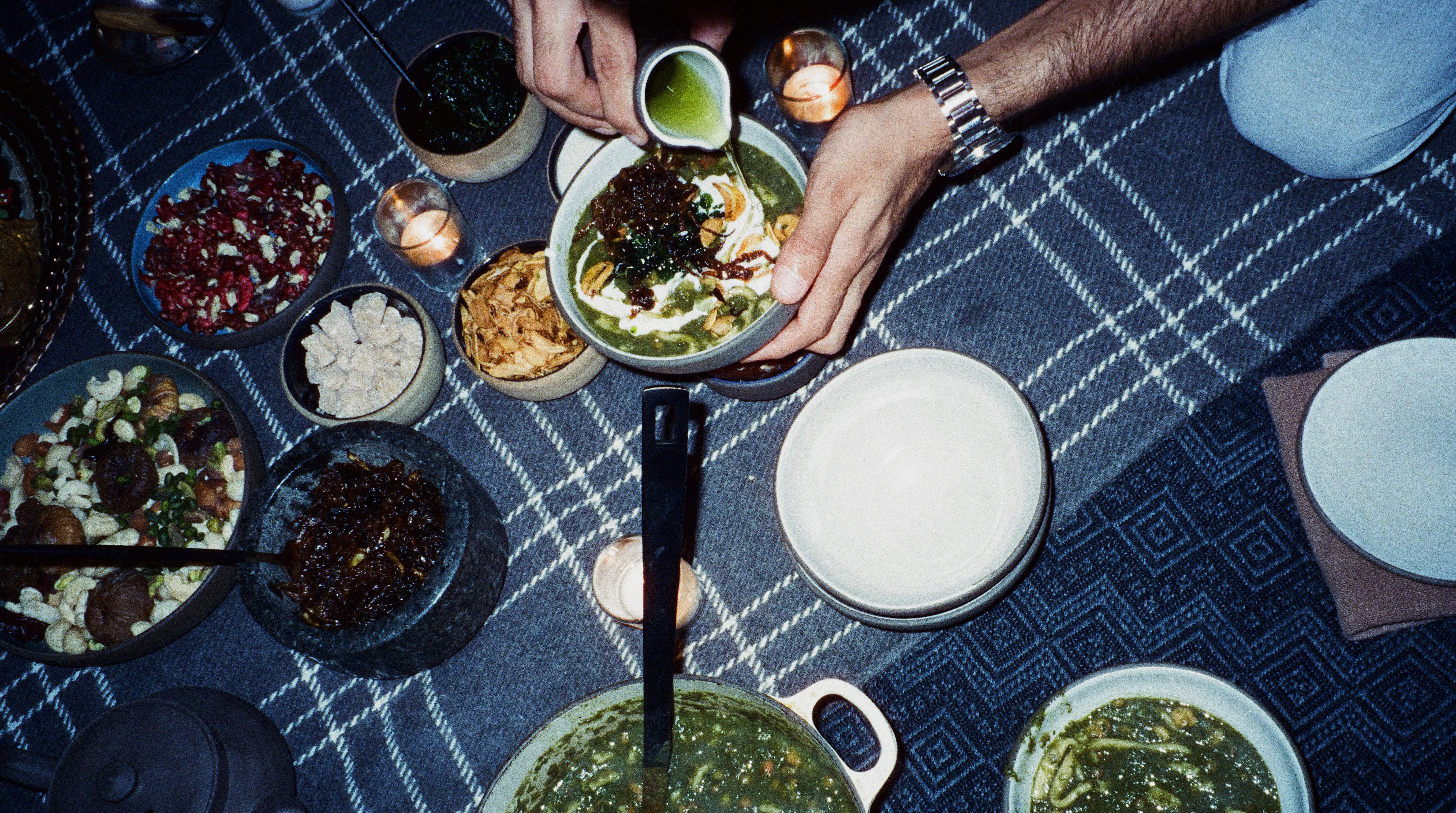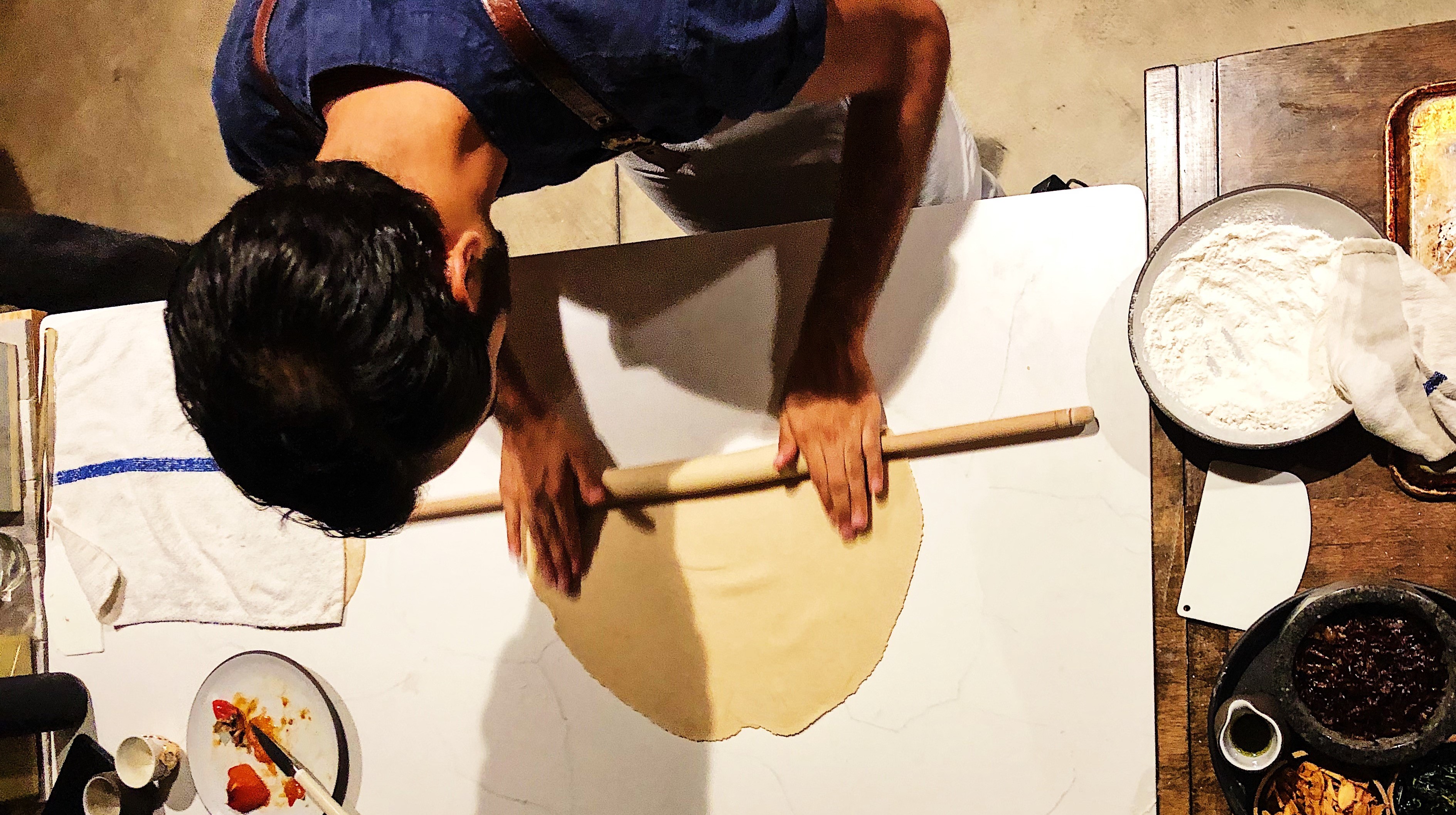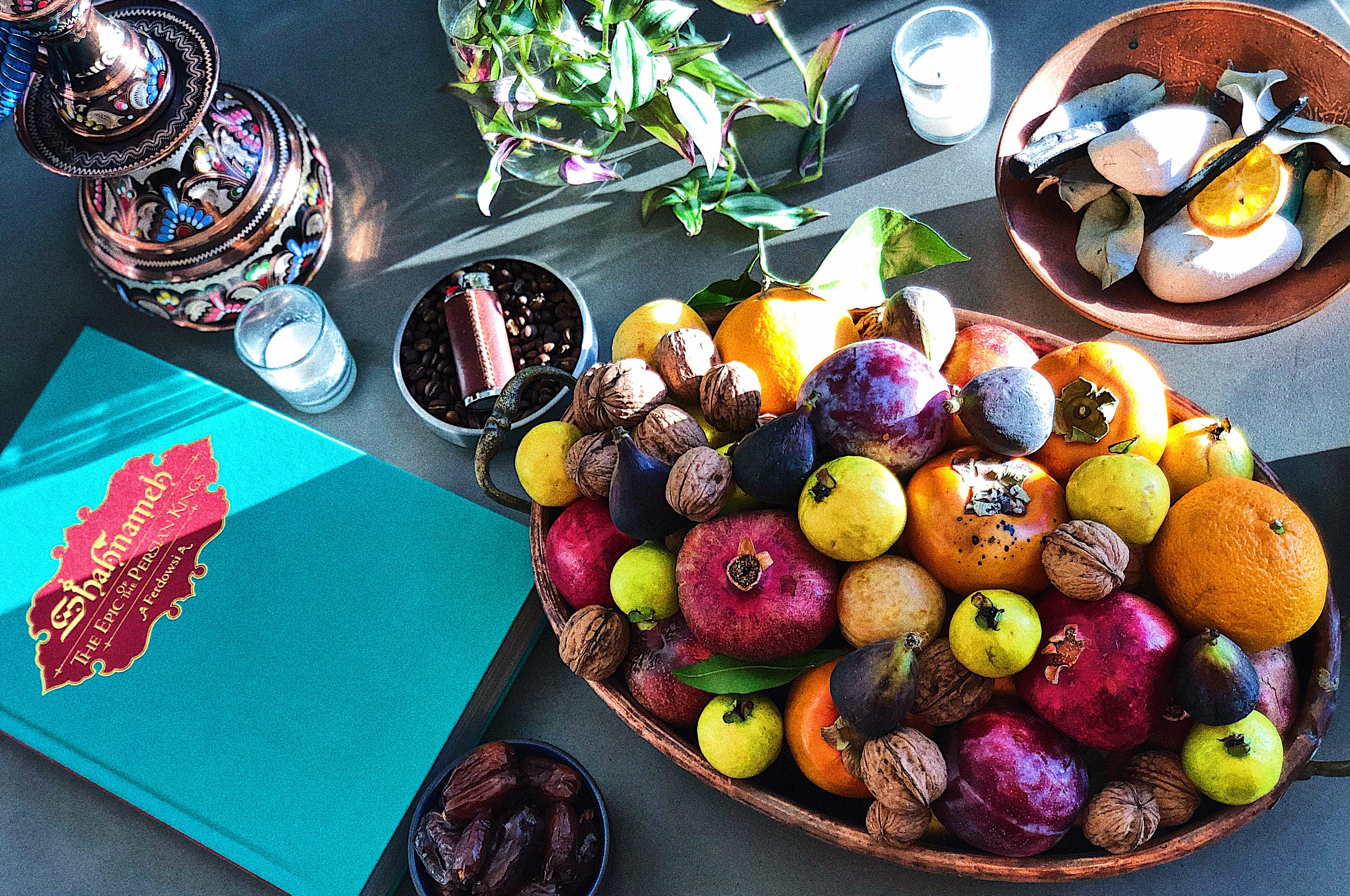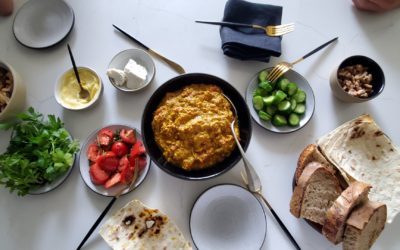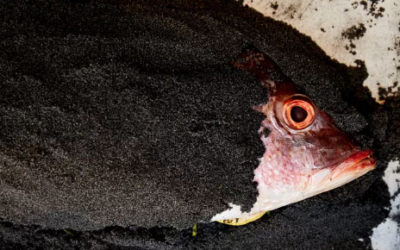I have burned this dish so many times. You couldn’t begin to imagine how many times I’ve burnt it. In fact, I have burned the bottom of pot of this dish so many times, that there were pots that we used in our family restaurant that became inconsolable. Heirlooms of a disaster of me in my first days in the kitchen. At 10, I was working at my family restaurant in Vancouver. A jaunt my aunt made across the street to grab her morning coffee at Starbucks bought her a 6 month spot at Lions Gate Hospital to nurse her fractured leg that the car went over, and my older cousin Ali and I were turned over to child labor to run and manage what had been my aunts life for over 15 years.
Photo By Aryan Seyedin
Every pot was taller than me. The enormity of the preparation behind this Iranian food that sustained our family was like shell shock to be observed. Herbs by the kilograms. Beans by the burlap sacks. Immovable bags of white onions. What seems like an entire farms worth of sheep’s heads. I was an adult almost overnight. Between the fascination and learning, there was stress, so much stress. Things burning, over cooking, undercooking, cooking wrong – cooking. Between the feedback from family & guests, I thought I was going to blow the whole thing. But after a time, I got better. The stews stopped intimidating me, I found time to stir things more often by working quicker in places where I was slow. I learned the order of which things went on and off the stove. How much salt at a glance something needed, or how thick the broth would get with more simmering. I learned and learned and learned and learned. Being in the kitchen became my ability to speak another language. Something even more Iranian than Farsi. It became something more important than cooking food.
Photo By Aryan Seyedin
On the 13th day after the Persian New Year growing up, we would carry blankets into public parks, a hodge podge of 50 or more so people; soccer balls, backgammon, cards, and a gigantic pot of aush reshteh. We would start Ramadan and the dish would appear again, being served to us each night by a different cook in the community fulfilling the “Nasreen” and feeding their neighbors in honor of the holy month. Someone would die – aush reshteh. Someone is born – aush reshteh. And during my favorite night of the year, the winter solstice was an evening of cardamom tea, sheep’s skin being slapped as drums and humming below the bellow of my father’s gallant singing. Card games in one corner of the room, tobacco and peach burning in the hookah in another, and bowls of aush reshteh and fresh pita bread making its ways around to many hungry and patient waiting.
Photo By Aryan Seyedin
Growing up, I think Yaldā and the celebration of the winter solstice was my favorite night of the year. Poetry was captured by the emphatic humming of my other aunts and uncle. There was joy in every single drop that filled the room. And the most incredible part was that this type of celebration, this expenditure of time, we shared it together every single day. There was never no meaningless time spent with my family. And to any effect, it was always grounded by some meal of notable sentiment. My greatest of friends are naturally my family. This past year has been hard to keep close to them, but I’m grateful for the pause it helped me take; it gave me the capacity to appreciate those moments with my family, the deep rooted beauty in my culture, the magic that happened in my home each night. I celebrate the immigrant’s privilege everyday – the one where we always have something worth sharing. I hope you all get a chance to see in every texture, in every color and in every person, the beauty that is family, and having some place to come from, and some story to tell.
A Few Kind Words Of Advice…
– Set some time aside and cook. All the different parts of this dish can be brought together by the time the stew is done simmering. This is not a meal to cook out of the necessity for hungry, but a ceremony and process to commit to. Whatever else you have to do does not matter until you’ve explored the pleasures of cooking this dish, with compromise, with all corners intact.
– Canned Beans Suck. They suck. They suck a lot. Canned beans are a substitute for fresh beans next to never in my mind. The lacquer of the dehydrated beans and broth they create as the cook and hydrate are what lends the underlining flavors to this dish. Be organized, plan to soak and gather your ingredients in advance. Compromise is the most bitter ingredient there is to cook with – leave it out.
– There is no such thing as too many herbs. Error on the side of plenty when adding your herbs, they can’t hurt anybody.
– Sharing makes it taste better. A big part of the cultural facet behind aush reshteh is
– The secret to happiness is salt. The base of the soup is rather simple, there are no truly secret and sophisticated flavors here in this stew, it will take seasoning and confidence to really develop a beautiful flavor. One other thing salt likes a lot is time, the longer the stew simmers, the richer it gets.
Ingredients:
Serves 12 people
For The Aush:
-
- ½ cup kidney beans, soaked overnight
- ½ cup navy beans, soaked overnight
- ½ cup pinto or cranberry beans, soaked overnight
- ½ cup chickpeas, soaked overnight
- ½ cup green lentils
- 1 large yellow onion, chopped fine
- 1 large bunch cilantro, rinsed thoroughly
- 2 large bunch parsley, rinsed thoroughly
- 1 large bunch spinach, rinsed thoroughly
- 1 large bunch dill, rinsed thoroughly
- 1 leek, white part chopped fine, greens washed + separated
- 1 tbsp turmeric
- 1 tsp advieh
- 4 tbsp olive oil
- Salt & freshly cracked black pepper to taste
For The Reshteh:
- 100g all-purpose flour
- 50g “00” flour
- 60g water
- 4g kosher salt
- Rice flour for dusting
For The Garnish:
- 4 cloves garlic, peeled, thinly sliced
- 1 bunch mint, leaves only
- 1 tbsp mint, dried
- 3 large yellow onions, sliced thinly
- 1 cup olive oil
- 1 quart grapeseed Oil
- 1 ounce dried keshk
- 1 cup yogurt
- 1 lemon, juiced
- Salt + pepper to taste
Process:
For The Aush:
- In a heavy-based, large stock pot, heat olive oil over medium-low heat.
- Add chopped onions, leeks (white parts) and a pinch of salt and sauté until deeply caramelized, approximately 15-20 minutes.
- Meanwhile, very roughly chop and mix together: parsley, cilantro, spinach, dill and the green part of one leek. In a food processor, blend herbs until they are finely chopped but not watery.
- Add herbs to the caramelized onions with 6 quarts of water, turmeric, advieh, salt and freshly cracked pepper. Bring to a simmer.
- Allow the stew to simmer for 5 minutes before draining the soaking liquid of kidney beans, navy beans, pinto beans, & chickpeas and adding them to the herb broth mixture. Cook gently on medium-low for 2 hours.
- Add green lentils and cook on low for another 30 minutes.
- Add noodles, and cook on low for another 15 minutes.
- Adjust seasoning + consistency with salt and water, the stew should resemble a thick gravy in consistency.
- Serve either with fresh bread + garnishes, or refrigerate overnight to develop more flavor. The longer it cooks and sits, the more flavoursome it becomes.
For The Reshteh:
- In a medium-sized bowl, mix together all purpose flour, “00” flour and salt.
- Add half of the water as evenly across the flour mixture as possible, using the tips of your finger, whisk together the flour and water, crumbling the dough between your fingers & hands to evenly distribute the water. You should be left with a bowl of doughy looking pebbles.
- Add the rest of the water, kneading hard to get the dough mass together. This part should be difficult. Do not over hydrate the dough with too much additional water. Work for 4-5 minutes to bring the dough together in a shaggy, un-smooth mass. Lightly wet your hands throughout kneading the dough after 4-5 minutes if more water is necessary to bring a rough dough together.
- Cover the mealy dough with a damp kitchen towel and allow to rest for 15-20 minutes.
- Once rested, knead the dough out until smooth, again wetting your hands only as necessary to bring the dough together and keeping mass supple and dense. Rest the dough for two hours.
- After rested, using a thin long rolling pin, roll the dough out on a lightly dusted work surface using rice flour, until it is about a 2mm thick rectangle, and measures in height to about the length of a dry pasta noodle (25cm).
- Carefully and with a generous dusting of rice flour across the dough, fold the rectangle in from both the bottom and top to create a letter fold. Using a sharp knife, cut the noodles to about 3mm thick.
- Carefully untangle the noodles and gently shake off any excess flour.
- Add the noodles to the simmering stew and cook as mentioned previously for 15 minutes.
For The Garnish:
Garlic Chips:
- In a small bowl, add sliced garlic and mix with boiling water till covered. Allow garlic to soak for 5 minutes before straining, this helps to soften the astringency of the garlic’s flavor. Thoroughly dab the garlic dry with a paper towel.
- Place garlic in an appropriately sized pot or pan with ¾ cups of olive oil. Cook gently over medium-low heat for 8-10 minutes, stirring occasionally, and season lightly with salt just as the garlic is starting to turn lightly golden brown.
- Strain the oil and set aside, transfer the garlic to an appropriate container lined with paper towel to abosrb the access oil.
Mint Oil:
- Place a pot of boiling water on the stove and set up an ice bath.
- Pick and separate the mint leaves into two containers, you should roughly have two cups of loosely packed mint leaves.
- Add the first container of mint into the boiling water and blanch for 10 seconds before straining into the ice water. Cool completely, approximately 2 minutes.
- Removed the mint from the ice water and dry liberally with paper towel, be diligent and squeeze out all the access moisture in the mint leaves.
- Add the mint leaves to a blender with 1 cup of the grapeseed oil and bend on the highest setting for 4 minutes. Strain the mint oil into a bowl set over ice through a very fine strainer or muslin cloth. Reserve the pulp.
- Add ¼ cup of olive oil to a sauté pan and heat over medium heat.
- Add fresh mint, dried mint and mint pulp to the oil and using a spoon, create a gentle circular stirring motion, shaking the pan lightly from side to side, and gently fry the mint in the oil until deep green and crispy, approximately 4-5 minutes.
- Add the mint back into the green mint oil set over ice, mix together gently and reserve at room temperature before garnishing with.
Crispy Onions:
- In a heavy-based wide sauté pan, add thinly sliced onions, the remaining grapeseed oil and the reserved garlic oil from the previous step. The top ½ inch of your onions in the pan should be just barely covered by the oil, adjust with more oil as needed.
- Bring to a simmer over medium heat and cook for 10-15 minutes stirring occasionally, and encouraging the onions to sweat and release steam.
- Once the onions have reduced in size and are all covered in oil, increase the heat to medium-high and cook the onions for 10-15 minutes longer or until they begin to caramelize and color slightly.
- Reduce the heat to medium-low and allow the onions to deeply caramelize and soften for 45 minutes or up to 1 ½ hours depending on the quality of the onions. Taste your onions from time to time to check their flavor development, they should be sweet, and mildly bitter, but not intolerably. You can cook these onions very very deeply.
- Once the onions are a deep dark golden brown, season with salt, and increase the heat to medium high. Cook the onions for 3-5 minutes, stirring vigorously until the onions are evenly crispy.
- Strain the onions from the oil, reserving the oil to garnish with as well, and leave the crispy caramelized onions on a paper towel to dry before garnishing with.
Kashk:
- In an appropriately-sized metal bowl, add a ¾ cup of boiling water to dried kashk and whisk till smooth and combined. Allow to cool to room temperature for 5-10 minutes.
- Add yogurt, lemon juice and salt, and whisk to combine.
- Adjust the flavor with more fresh lemon juice and salt as needed to achieve a sour & salty, lactic forward sauce with a creamy dressing-like consistency. Imagine a tangy buttermilk like condiment to season a dish with.
- Reserve in the refrigerator until needed to garnish with.
